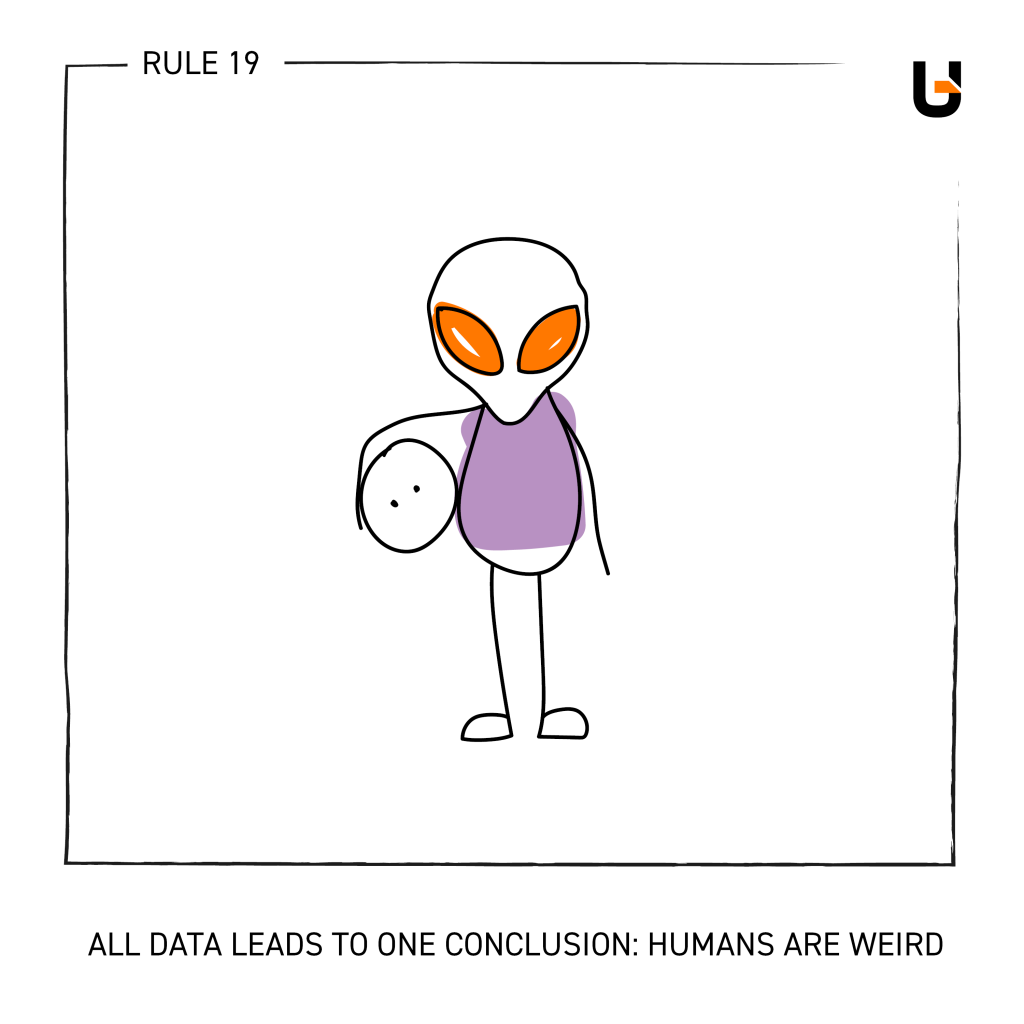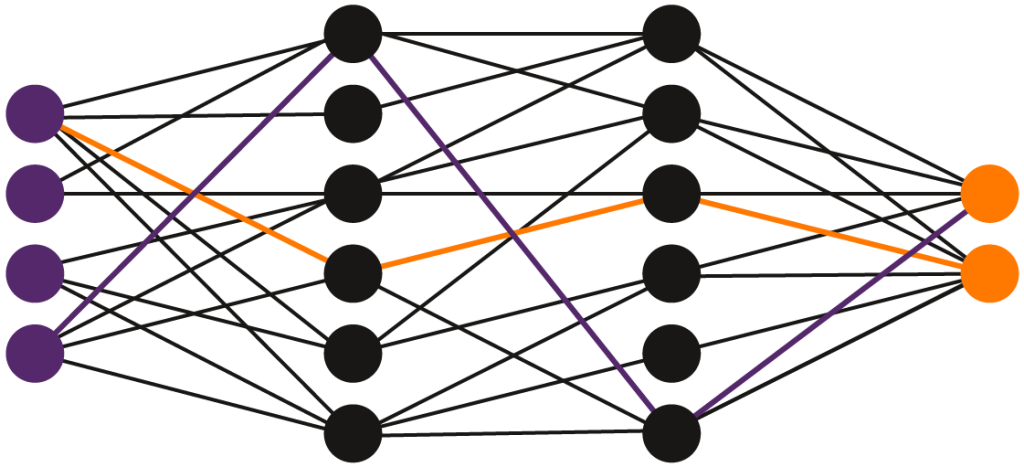AI in Business / Most Common Myths Debunked
As artificial intelligence (AI) becomes increasingly prevalent in the business world, there are many myths and misconceptions that have emerged around this technology. Some of these myths can be harmful to businesses, as they may discourage the adoption of AI or lead to poor decision-making.
So let’s debunk some of the most common myths of artificial intelligence in business and provide accurate information to help business leaders make informed decisions about AI adoption. From fears about job loss to concerns about biased decision-making, we’ll explore these myths and separate fact from fiction. We hope this deep dive helps you separate the AI hype from reality!
Myth 1/ AI Tool Immediately Solve Your Problems
While AI has shown impressive capabilities in various fields, it is important to remember that it is not a magic tool that can solve all problems or replace the human brain. It is also important to remember that the AI algorithms we use today are not so-called strong artificial intelligence or general AI, i.e., having all the attributes of the human intelligence and mind.
The intelligent machines we use today are designed for solving specific problems and mimicking human capabilities in specific areas. In business, for example, this might be predicting sales or recommending products to users. Of course, these machine learning models rely on accurate data and are only as good as the quality of the data they receive.
Moreover, If you want to implemented AI and data science solutions in your company, you should remember it’s quite the complex and iterative process. It is necessary to collect and prepare data properly, define the business problem, develop models, assess whether they meet the business goals and, if so, implement them.
CONCLUSION: AI solutions aren’t magic solutions to immediately solve all problems and business challenges. In fact, data science projects are similar to typical science projects. There’s a lot of experimenting and hypothesis verification required.
Myth 2 / AI Will Replace Humans at Work
History shows that even when some jobs disappeared, new ones were naturally created. Excavators took the jobs of shovel-wielders, and washing machines eliminated the profession of laundresses (and we bet many of you have forgotten that was even a word 😉). But do we miss these jobs? Despite fears that artificial intelligence will replace workers, the reality is that AI solutions are designed to help and support the workforce.
The purpose of AI technology is not to eliminate human beings from the workplace, but rather to automate time-consuming and routine tasks, freeing up workers to focus on more creative and important jobs. Even up to 25%. This can enable employees to put their time and energy into high-level thinking, decision-making, and problem-solving, which are essential skills that machine learning algorithms cannot fully replicate.
AI can also improve the efficiency and productivity of businesses, leading to better profits and growth.
CONCLUSION: AI is changing the workforce and jobs but removing humans from the loop is not the intention.
Myth 3 / AI is Only Automating Simple Jobs
While it is true that AI has been used to automate routine and repetitive tasks, it is increasingly being used to replace more complex jobs as well.
For example, artificial intelligence is being used in fields such as medicine and law to assist with decision-making and analysis. One real-life example is the use of AI in diagnosing diabetic retinopathy, a leading cause of blindness in people with diabetes. In 2018, the U.S. Food and Drug Administration (FDA) approved the first AI-based diagnostic system, called IDx-DR, for detecting diabetic retinopathy. Doctors can now identify the condition in its early stages and initiate timely treatment, potentially reducing the risk of vision loss for millions of people with diabetes. Where the most gifted human mind is unable to pick up these complex patterns, AI performs admirably.
CONCLUSION: AI can automate and support humans in advanced processes and analyses as well.

Myth 4 / AI Will Replace Your Marketing Department
While Generative Artificial Intelligence (GAI) has made great strides in natural language processing, you should be careful with its outputs. Betting on AI for top quality content may not be the best strategy.
However, AI can support your marketing team in content creation by generating ideas, providing data insights, preparing drafts that you can develop and work on, and even optimizing content for search engines and social media platforms.
But let’s not forget one important factor – AI solutions are built and trained on data sets. As such, at their current level, they can never be truly unique. Only humans can currently think outside of the box. Look at it this way – if everyone is using AI to feed their content, do you want to do the same and blend in, or be different and stand out?*
*Yes, our marketing team was involved in writing this 😉
CONCLUSION: AI will speed up your marketing team job and create some content for you, but you need human intervention to oversee and polish the outputs anyway.
Myth 5 / AI is Never Wrong
While AI can be incredibly accurate and efficient, it is only as good as the data, it is trained on. If the data used to train AI models is of low quality or contains biases, the results can be flawed and inaccurate.
Additionally, AI models can make mistakes and errors, especially when dealing with complex or ambiguous situations. Current models can also be convinced to change their statements with relative ease.
It is also important to note that biases can be introduced into AI systems through the data used to train them or the algorithms used to make decisions. We’ve already seen racist Twitter bots, and even AI used in the US governmental system, all because of bad data. Engineers as well as analysts need to remain focused and patient with preparing non-biased data to avoid such mistakes. And that’s not even mentioning the need to constantly inspection of the AI outputs.
CONCLUSION: The quality of AI output depends on the quality of data. Remember the rule – garbage in, garbage out.
6 / AI Will Replace Customer Service
While AI can automate certain tasks and provide support to customers, it cannot replace the human interaction of genuine customer service. AI can support customer service by handling simple queries and frequently asked questions through chatbots or voice assistants, freeing up human agents to handle more complex inquiries.
AI can also analyze customer data to provide personalized recommendations or help predict potential issues before they occur. However, when it comes to more emotional or complex customer interactions, AI cannot fully replace the empathy and understanding that only a human agent can provide.
Let’s also not forget what we said earlier – AI programs are not perfect. When it makes mistakes, having a human on hand is never a bad idea.
CONCLUSION: AI can handle common questions from your customers, but you still need a human in the loop for more complex issues.

7 / AI Models Are Black Boxes That Can’t be Explained
In many situations, explaining the decision made by AI models is crucial. For example, in both the medical and financial sectors, life-impacting decisions need to be made at an individual basis. In order to avoid ethical or morale concerns, these decisions must be made in a clear and concise basis. And to explain AI predictions and decision-making, we can use a variety of techniques collectively known as Explainable AI (XAI).
One method is to identify the most important features or inputs that contribute to the AI’s prediction or decision. This helps users understand which factors were most influential in the outcome. The other method is to generate explanations for individual predictions or decisions by exploring how the AI system behaves in the vicinity of specific data points.
CONCLUSION: While AI models can be complex and difficult to understand, there are methods available to explain their predictions and improve their transparency.
8 / You Always Have Copyrights to the AI Tools Output.
Copyright ownership in relation to AI creations is still a gray area, and the law has not kept pace with technological changes. There is a current consensus that only works created by humans can be the subject of copyright protection. Therefore, there is no concern about copyright for AI-generated works being attributed to AI itself, which has no legal subjectivity.
It is therefore possible that AI creations, having no author, will not enjoy copyright protection and will enter the so-called public domain. As a result, everyone will be able to use them freely. However, it is not clear how the relationship between the works on which the AI learns and the content generated by the AI will be assessed from a copyright perspective. The lawsuits against Midjourney or OpenAI for alleged copyright infringement show how complicated this issue is.
CONCLUSION: The ability to use the creations of AI and the copyright of such creations are two separate and complicated issues that will need to be resolved in the near future. It is likely that, in most cases, you will be able to use AI-generated content under the terms of its service providers, but the creations will enter the public domain and have no author under the law. If you are in any doubt about your situation, it is worth consulting a lawyer.
9 / AI Solutions Are Always Expensive & Require Developer Engagement
When it comes to artificial intelligence solutions, we can distinguish between general-purpose products and personalized solutions tailored to a specific company and its data.
Publicly available products such as ChatGPT and Midjourney are easy to use and highly affordable. Anyone without a programming or computer science background can use them.
On the other hand, solutions based on customer data require technical knowledge of data scientists and data engineers on how to process such data, build a model based on it and implement it as part of the organisation’s IT system. Such AI-based systems are designed to solve problems or achieve specific business goals, such as maintaining optimal inventory levels or increasing sales through recommendation systems.
Additionally, there are open-source AI libraries and frameworks available, which can be used by developers to develop AI solutions at a lower cost. Furthermore, many cloud-based AI services offer pay-as-you-go pricing, making it more accessible and affordable for organizations of all sizes.
CONCLUSION: The number of user-friendly tools utilizing AI algorithms is growing exponentially and many of them don’t require coding skills. For customised AI solutions for businesses, you can use standard components and benefit from flexible paying models. This makes adopting AI solutions easier.
Artificial Intelligence is Here and Now
Today, no company or employee can ignore the disruption caused by artificial intelligence. This revolutionary technology is significantly changing the structure of work and redefining the existing rules of the game. And we still don’t know what the end result will be. It is crucial for businesses to understand artificial intelligence and how it works in order to prepare for the new reality and build technological advances.








